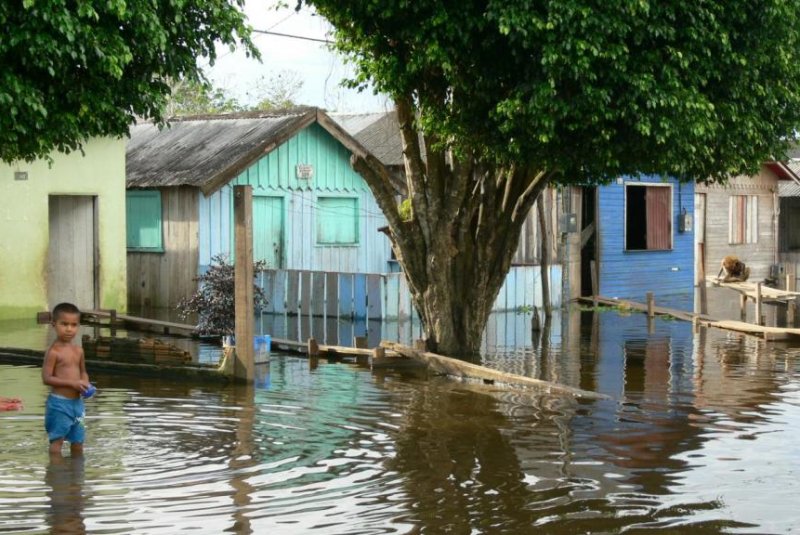Floods in the Amazon can spread disease and pollution. Photo by Jochen Schöngart/National Institute for Amazon Research
Sept. 19 (UPI) -- The Amazon, the world's largest river, is flooding five times more frequently than it did 100 years ago.
Scientists in England, Chile and Brazil analyzed river level records dating back more than a century. The data showed extreme floods -- when water levels rise at least 95 feet, triggering an emergency declaration in the city of Manaus -- occurred approximately once every 20 years during the first half of the 20th century. Today, extreme floods occur every four years.
"Increases of severe droughts in the Amazon have received a lot of attention by researchers," Jonathan Barichivich, researcher at the Austral University of Chile, said in a news release. "However, what really stands out from this long-term river record is the increase in the frequency and severity of the floods. With a few minor exceptions, there have been extreme floods in the Amazon basin every year from 2009 to 2015."
Barichivich and his colleagues shared the results of their analysis this week in the journal Science Advances.
Researchers believe the increase in flooding has been fueled by the so-called Walker circulation, a weather pattern driven by temperature and air pressure differences above the Atlantic and Pacific oceans.
Over the last decade, Atlantic Ocean temperatures in the tropics have risen steadily, while ocean temperatures in the Pacific have dropped. The Walker circulation is propelled by interactions between the air masses above both oceans.
"The effect is more or less the opposite of what happens during an El Niño event," said Manuel Gloor, a geographer at the University of Leeds. "Instead of causing drought, it results in more convection and heavy rainfall in the central and northern parts of the Amazon basin."
Though natural variability my explain much of the Atlantic's warming, researchers believe global warming is also to blame.
Catastrophic flooding in Brazil can help spread pollution, parasites and disease. Floods can also disrupt food distribution and trigger social unrest.
Though scientists expect the Walker circulation to dissipate in the near future, the Amazon is likely to continue flooding more frequently than it did several decades ago. To protect Brazil's citizens from the problems caused by extreme floods, policy makers must adapt to the new reality.















